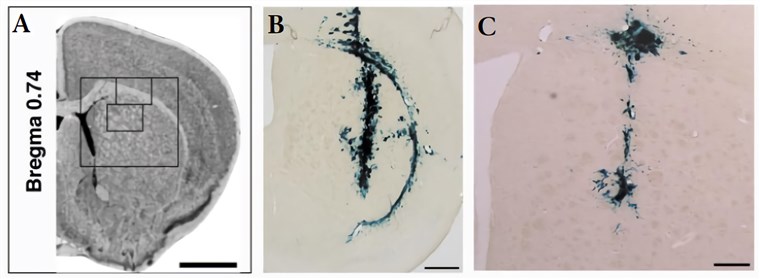Mokola Virus
Pseudotyped lentiviral vectors (LVs) have been widely used as gene transfer tools for the central nervous system (CNS) in the past decade, because they transduce most cell types in the brain, leading to high levels and long-term transgene expression. Creative Biolabs has established a variety of LVs optimization platforms to make LVs targeting CNS. With years of experience and advanced technology in this field, we provide high-quality pseudotyping services of lentiviral vectors to targeting neuronal cells.
Background of Mokola Virus
Mokola virus (MOKV), a rabies-related virus, is a member of the genus Lyssavirus, which belongs to the Rhabdoviridae family. MOKV infects cats and other sub-Saharan mammals but rarely infects humans. The infection of MOKV can be identified by anti-lyssavirus nucleocapsid monoclonal antibody typing. It shares antigen serotypes with rabies virus (RV, another member of the Rhabdoviridae family), but exhibits a broader tropism. MOKV is able to infect various cell types, but tropism is mostly restricted to neurons. It recognizes specific receptors on the surface of neurons and enters neurons through these receptors.
The Pseudotyping of LVs with Mokola Virus
 A variety of primate LVs, including vectors based on human immunodeficiency virus (HIV) and simian immunodeficiency virus (SIV), or on non-primate lentiviral vectors such as feline immunodeficiency virus (FIV), have proven to mediate significant transgene delivery in the mammalian CNS cells in vivo and in vitro. It has been well documented that the tropism of LVs can be altered using pseudotyping strategies, including the replacement of the vector envelope glycoprotein with alternative glycoproteins (GPs) derived from other enveloped viruses. The most common glycoprotein used to pseudotype LVs is the vesicular stomatitis virus glycoprotein (VSVG) protein.
A variety of primate LVs, including vectors based on human immunodeficiency virus (HIV) and simian immunodeficiency virus (SIV), or on non-primate lentiviral vectors such as feline immunodeficiency virus (FIV), have proven to mediate significant transgene delivery in the mammalian CNS cells in vivo and in vitro. It has been well documented that the tropism of LVs can be altered using pseudotyping strategies, including the replacement of the vector envelope glycoprotein with alternative glycoproteins (GPs) derived from other enveloped viruses. The most common glycoprotein used to pseudotype LVs is the vesicular stomatitis virus glycoprotein (VSVG) protein.
Advantages of MOKV-LVs
Nowadays, retrograde transport of gene therapy vectors offers a potentially powerful strategy for targeting specific neuronal populations in vivo. Pseudotyping of LVs with Mokola envelope glycoproteins (MOKV-LVs) can transduce a broad variety of cells in the murine brain upon in vivo transduction, conferring both neurotropism and the ability to retrograde axonal transport. Moreover, the transduction efficiency of Mokola-pseudotyped LVs is higher than that of the VSVG-pseudotyped vector when they transduced similar populations, including the striatum, thalamus, and white matter. In addition, another potential advantage of the MOKV-LVs is that it is less toxic than VSV-G when expressed in packaging cells and may, therefore, be used to generate stable packaging cell lines.
 Figure 2. In the striatum and external capsule (A), positive β-galactosidase staining was observed in brains injected with either the Mokola (B) or VSV-G (C) vector. (Watson, 2002)
Figure 2. In the striatum and external capsule (A), positive β-galactosidase staining was observed in brains injected with either the Mokola (B) or VSV-G (C) vector. (Watson, 2002)
Creative Biolabs provides one-stop Mokola-pseudotyped LVs development services to targeting neuronal cell. We also offer unsurpassed service and support for LVs vector design, safety determination, and development. Our experienced staff consists of Ph.D. level scientists with a broad background in different life sciences disciplines to help you with any questions about LVs in your research. Please contact us for more information..
Reference
- Watson, D. (2002). Targeted Transduction Patterns in the Mouse Brain by Lentivirus Vectors Pseudotyped with VSV, Ebola, Mokola, LCMV, or MuLV Envelope Proteins. Molecular Therapy. 5(5):528-537.
